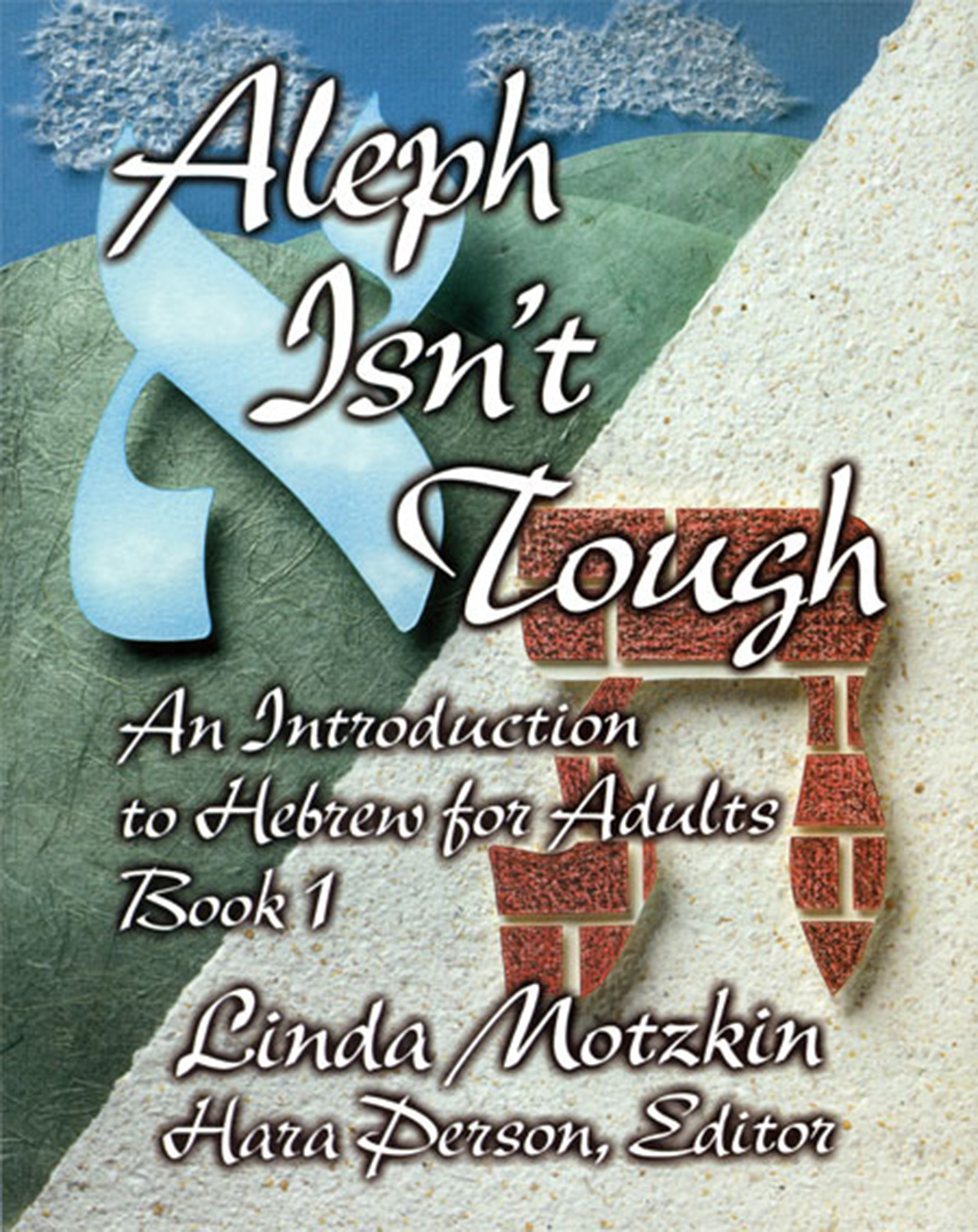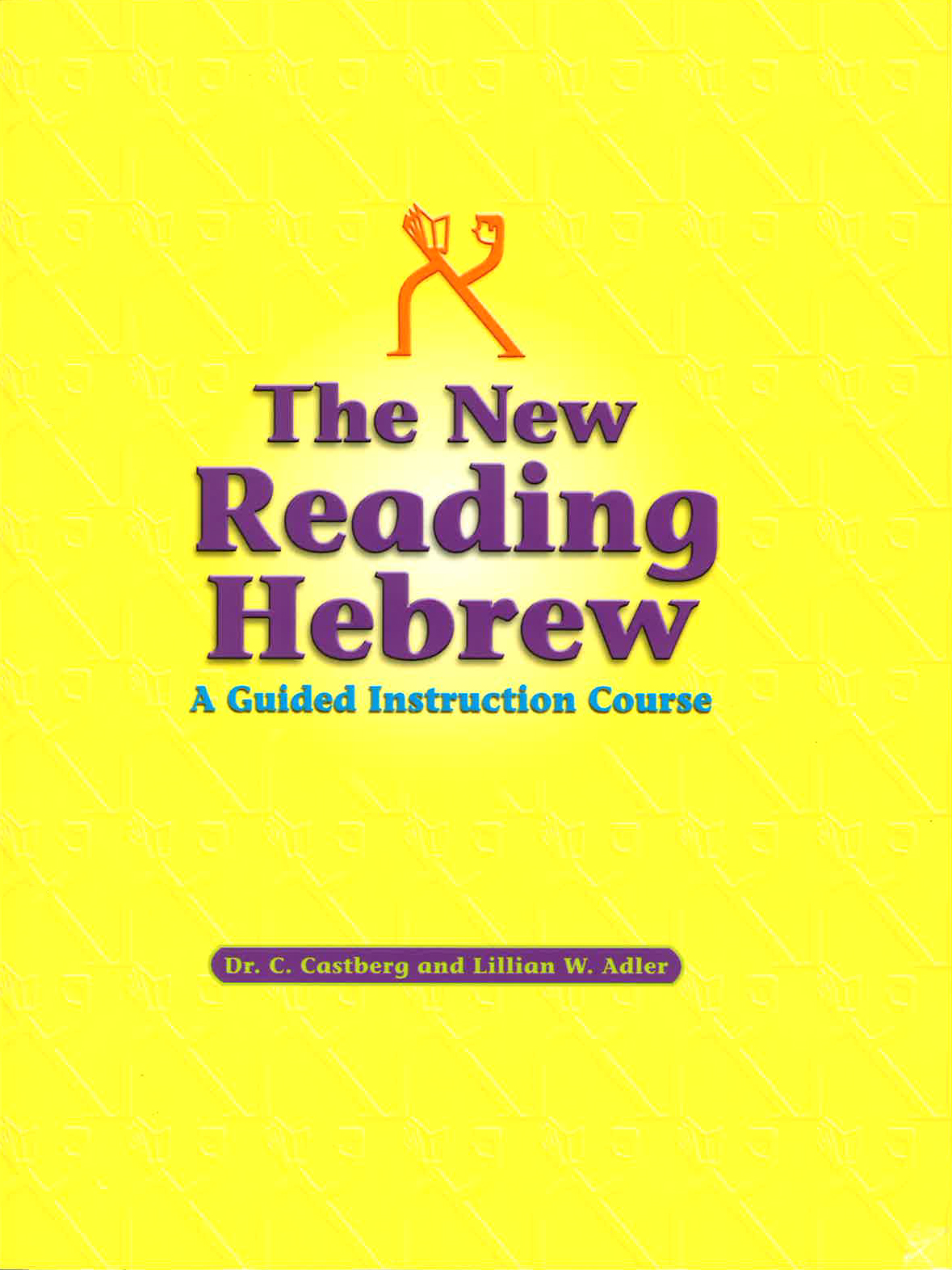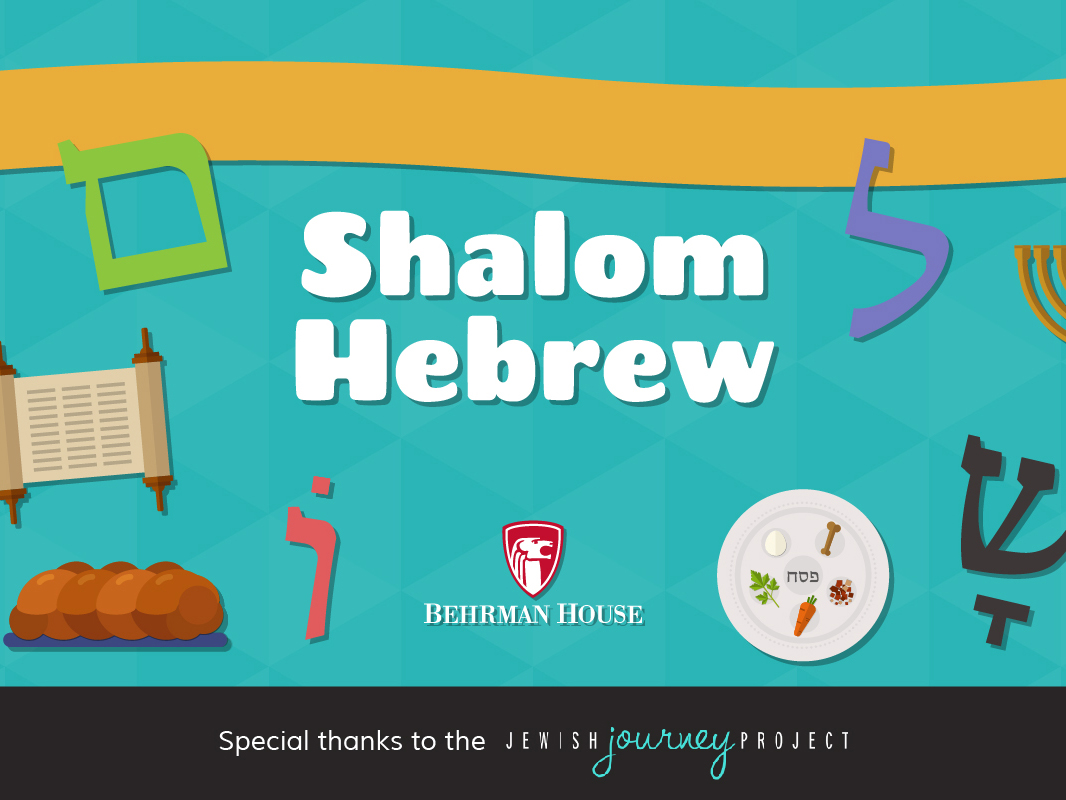- Home
- Play & Learn Home
- Online Enrichment
- Experience Modern Israel
- Israel It's Complicated
- Jewish and Me
- Jewish Holidays Jewish Values
- Jewish Values in Genesis and Jewish Values in Exodus
- Min Ha’aretz
- Our Place in the Universe
- Simply Seder
- The Prophets: Speaking Out for Justice
- Making T'filah Meaningful
- Make, Create, Celebrate
- Yom Haatzmaut Resources
- Hebrew Apps
- About The OLC
- What is the OLC?
- Introduction
- Get Started
- Resources
- OLC Content
- Parent Materials
- See My OLC Classes
- Store
New Year, New Learning: Tools for Teaching Hebrew to Adults
Written by Behrman House Staff, 15 of August, 2017
Fall isn't just about new beginnings for children. Adults in many communities are interested in learning to read Hebrew to engage more deeply in Jewish religious life - whether via prayers or readings at a synagogue or the blessings and rituals of home observance. Just as children learn in different, there are different ways of approaching beginner Hebrew for adults.
JoHanna Potts, a rabbi and educator who has taught Hebrew to adults for more than 30 years in the Washington D.C. area, shares some observations about teaching this type of student.
Who is learning?
"Many of them are people who are just at the point in the lives that they want to understand prayers better," Potts says. "Often they know the prayers by heart but don’t know how to read them. I also see some parents whose children are close to b'nei mitzvah age and want to participate in a meaningful way. Or they themselves are in the adult b'nei mitzvah process."
How do they learn?
"When you teach children, you as the teacher have to be prepared to not finish a lesson," Potts says. "With adults, however, you need to prepare a lesson and a half because you can often go so much faster. Adults are more motivated to do the work than to get out of doing the work. They are choosing to be there, and they really want to learn."
Potts always asks her adult students how they learned to read English as children - whether using phonics or Whole Word Reading. Hebrew is a phonetic language, and is usually taught that way. She's found that adults who learned the via whole word have more difficulty switching to phonetics.
How many students is ideal?
Having a 1:1 student to teacher ratio has significant advantages, but in a group setting, Potts has found that a class of between 6 and 10 makes for a comfortable class. With a group that size, she can have students do partner work, such as reading to each other or working with flash cards they’ve made for each other. She uses a magnet set with separate vowels and has students make up letter-vowel combos for each other to read. "It's nice to break up the learning a bit," Potts says.
What materials are designed for adult Hebrew learning?
There are a variety of materials for use as guided learning in both group settings and with individual students.
 Aleph Isn't Tough
Aleph Isn't Tough
This popular book is the first part of a four-volume series called Hebrew for Adults, with companion teacher's guides and flashcards available as additional support. Many adults beginners are interested in focusing on reading or biblical or prayer Hebrew, and Aleph Isn't Tough teaches students how to decode with the goal of following along in a prayer book.
"It builds very nicely at beginning with words that adults already know," says Potts. "Most of my students have experience with Shabbat services, and in this series the first thing they learn to read is 'Shabbat,' next is 'shalom.' They know the words and now they can picture them. It follows their experience."
She also appreciates that Aleph Isn't Tough offers a little Judaic content, via a feature called Extra Credit. For example, one section explains the connection between the word 'chai' and the number 18.
"I also like that adult students can feel success very quickly," Potts says. "For adults to put themselves on the line and put themselves out of their comfort zone, it's important." Once students have complete dAleph Isn't Tough, Potts moves to the second book in the series - Aleph Isn't Enough, which teaches grammar - in parallel with the siddur.
 The New Reading Hebrew ~ A Guided Instruction Course
The New Reading Hebrew ~ A Guided Instruction Course
This unique primer teaches decoding, in a self-guided, self-paced format. Each of the 16 lessons is organized into 30 bite-size pieces, which reinforce a concept. The look and shape of each letter is associated with a sound, and new letters and vowels are introduced very slowly using simple repetitions.
Students can also see answers to questions on the next page, so they can check and correct themselves. The primer is ideal for students who simply want to learn to read. There is no vocabulary or other Judaic content.
 Shalom Hebrew
Shalom Hebrew
This primer is designed for students to learn to decode Hebrew accurately and fluently. Designed in both book and digital formats, students can use either version as a stand-alone primer, or in combination for more reinforcement. Each of the 24 lessons builds on a foundation of key cultural words, such as mitzvah and shamash, and introduces related letters, vowels, syllables and words, with plenty of practice opportunities.
The digital version allows students to learn Hebrew aurally and visually at the same time, hearing the sounds of letters, vowels and syllables. Learners can also record themselves reading and play back the recording, and compare their pronounciation to both Israeli and American voices.
View a demo of the app here. There's also a free Educator's Guide to Using Shalom Hebrew Digital App, available for download here.
How to use Shalom Hebrew Digital:
1. Purchase the app from behrmanhouse.com
2. Log into the Apple App Store, Google Play or Amazon App Store, and download Shalom Hebrew using the same credentials used to purchase the app.


